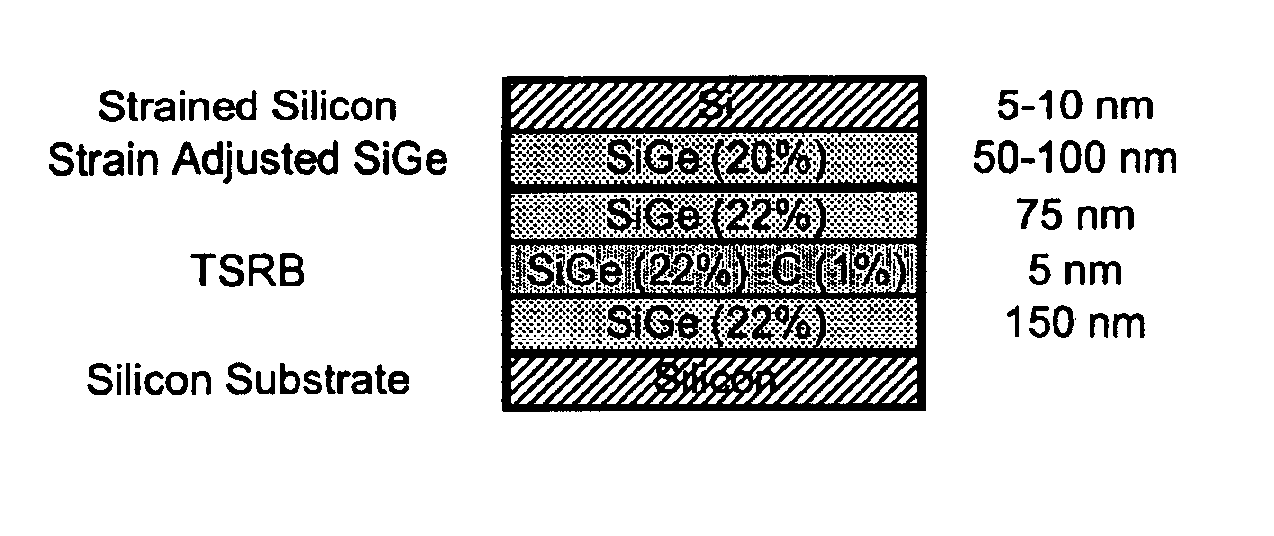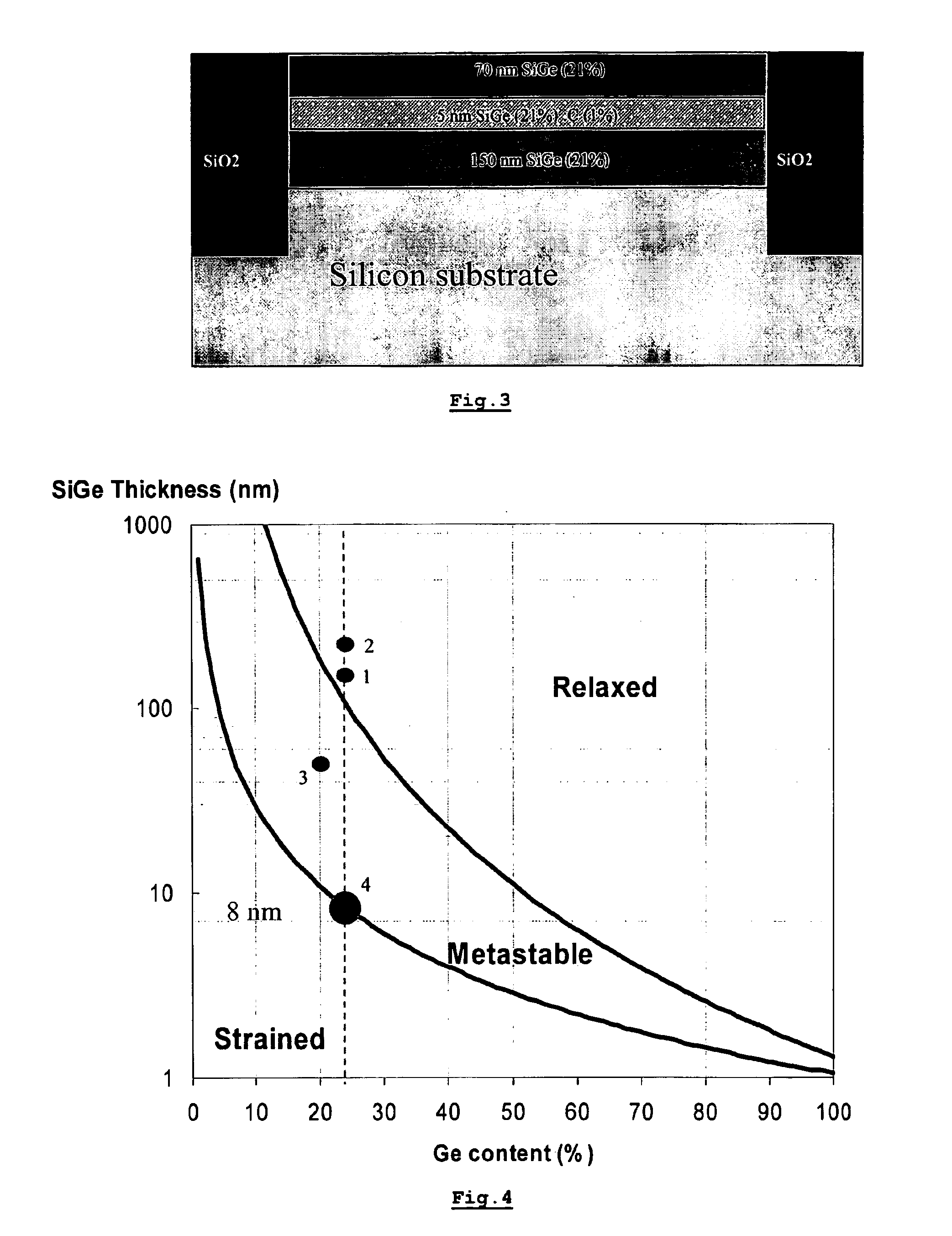SiGe strain relaxed buffer for high mobility devices and a method of fabricating it
a buffer and high mobility technology, applied in the field of sige strain relaxed buffer for high mobility devices and a method of fabricating it, can solve the problems of low level of integration possible on these wafers, lack of natural oxide such as siosub>2/sub>, and insufficient high frequency and opto-electronic properties of conventional silicon based devices, etc., to achieve a simple and reliable method of growing tsrb
- Summary
- Abstract
- Description
- Claims
- Application Information
AI Technical Summary
Benefits of technology
Problems solved by technology
Method used
Image
Examples
Embodiment Construction
[0057]The following description and examples illustrate a preferred embodiment of the present invention in detail. Those of skill in the art will recognize that there are numerous variations and modifications of this invention that are encompassed by its scope. Accordingly, the description of a preferred embodiment should not be deemed to limit the scope of the present invention.
[0058]The preferred embodiments relate to a Thin Strain Relaxed Buffer (TSRB) for the integration of high mobility devices (for example SiGe / strained Si system) on top of a semiconductor substrate like e.g. Silicon. In the following description both the Thin Strain Relaxed Buffer and the method to obtain it are explained.
[0059]One grows epitaxially a TSRB based on Si0.78Ge0.22 / Si0.78Ge0.22:Cy / Si0.78Ge0.22 multilayer system, with y (C concentration) at least 0.3% and preferably between 0.5% and 1%. 91% relaxation was reached after rapid thermal annealing (30″ at 1000° C.) of the TSRB, with a very smooth surfa...
PUM
 Login to View More
Login to View More Abstract
Description
Claims
Application Information
 Login to View More
Login to View More - R&D
- Intellectual Property
- Life Sciences
- Materials
- Tech Scout
- Unparalleled Data Quality
- Higher Quality Content
- 60% Fewer Hallucinations
Browse by: Latest US Patents, China's latest patents, Technical Efficacy Thesaurus, Application Domain, Technology Topic, Popular Technical Reports.
© 2025 PatSnap. All rights reserved.Legal|Privacy policy|Modern Slavery Act Transparency Statement|Sitemap|About US| Contact US: help@patsnap.com



